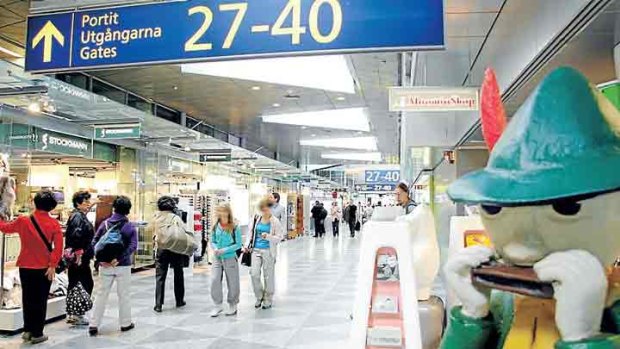By Dugald Jellie

Top of the world ... Helsinki-Vantaa, voted the world's best airport this year.
Helsinki and other transit hubs are offering more ways to get to Europe, writes Dugald Jellie.
The joke has it that most Americans don't know where they'll go when they die, but do know that to get there they'll "change planes at Atlanta". The world's busiest airport handled 89,331,622 commuters last year , most of whom were domestic travellers connecting on Delta flights.
For Australian travellers, changing planes is usually a foreign affair on long-haul flights to Europe and the US east coast, with a stop in south-east Asia, California or Dubai, a shooting star of the Middle East and Emirates' home port.
Yet the global matrix of air travel offers other ways of getting from A to B - alternative routes through smaller hubs that sometimes offer cost advantages and greater convenience. Ever considered a stopover in Seoul en route to London? South Korea's Asiana Airlines has for many years offered cheap deals to Heathrow with a restorative night's paid accommodation, airport transfers and meals thrown in on the leg over.
Another gateway to Europe has opened further ajar for Australian travellers, with Finnair's recent addition of overnight flights connecting Singapore and Helsinki (11hr 30 min), adding to its regular south-east Asian schedules from Bangkok and Hong Kong. "If you travel into Europe from Asia you fly over Finland," says the airline's chief executive, Mika Vehvilainen, extolling Finnair's advantages. "Helsinki happens to be in the right place, it's in the right geographical position."
That is, it's on an existing trade route. Travel industry forecasts have annual global airline passenger numbers growing 800 million to 3.3 billion by 2014 - with nearly half of new passengers likely to come from Asia. The Asian boom is being driven by intra-Chinese flights, and intercontinental services between Asia and Europe. Of this travel, about half is point-to-point (that is, from one big city to another), with the other half needing to change aircraft somewhere.
Enter Finnair, the Finnish flag-carrier, a majority state-owned boutique operation that Vehvilainen at a recent media briefing conceded was "not an automatic choice for anybody except maybe corporate travellers out of Finland". Without a big home market, the airline is plying its trade on a new Silk Road - positioning itself as an intermediary that since 1996 has upped its weekly flights to Asia from 10 to 74, with services planned to rise to 140 by 2020.
It's a business model that's feasible only because of the whereabouts of its home airport - Helsinki-Vantaa - on the shortest flight path between Asia and Europe. It helps that the airport - with 13 million passenger movements last year, minor when compared with London Heathrow (66 million) - is a model of efficiency. Monocle magazine recently voted it the world's best airport and Skytrax rated it the world's best for baggage delivery.
Finnair hopes Australians will make the switch to Helsinki, utilising its hub-and-spoke network of 50 European destinations, with flight-time advantages to many cities in the continent's north and east. It's a route made more attractive by Finnair's combination-class fares from Australia with code-share partners (Qantas, British Airways, Cathay Pacific), whereby passengers travel to and from Asia in economy, and lie down in business class for the long-haul night flight to Helsinki.
Dugald Jellie travelled courtesy of Finnair.
Sign up for the Traveller Deals newsletter
Get exclusive travel deals delivered straight to your inbox. Sign up now.